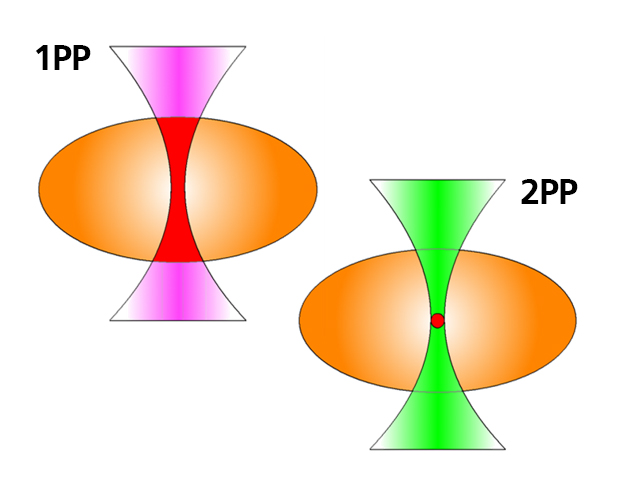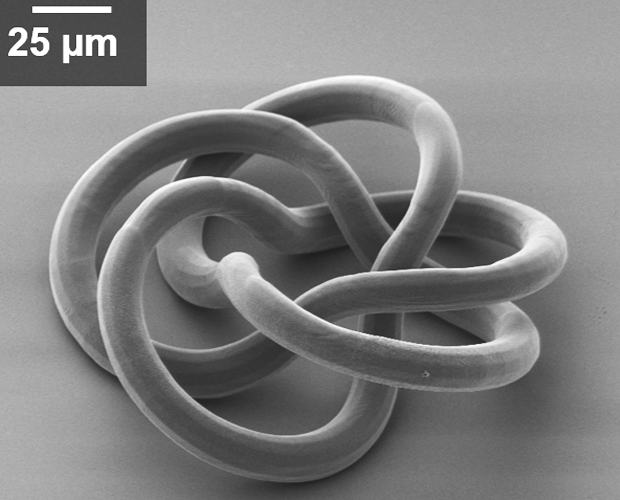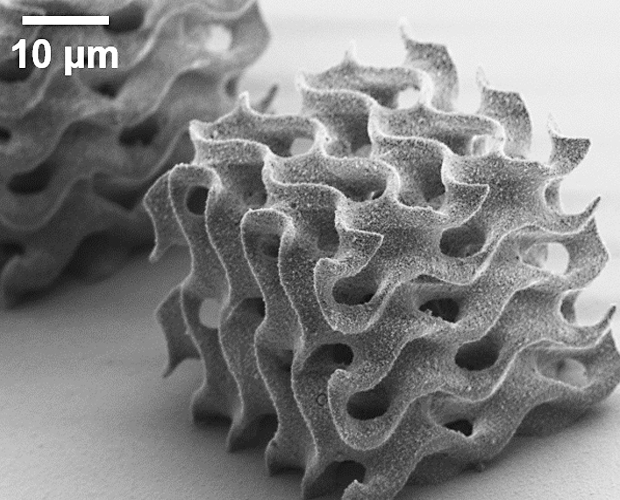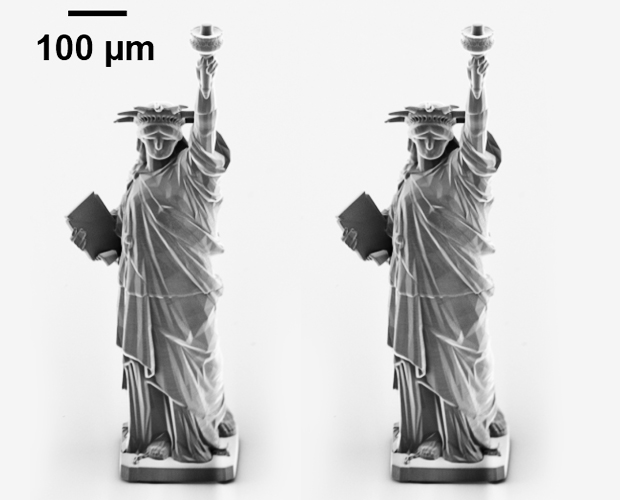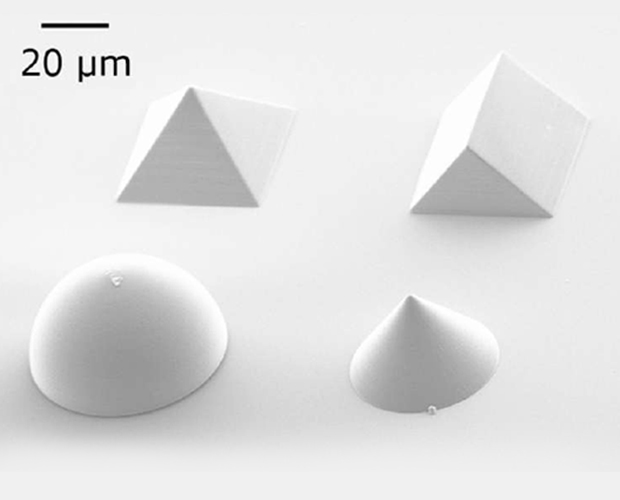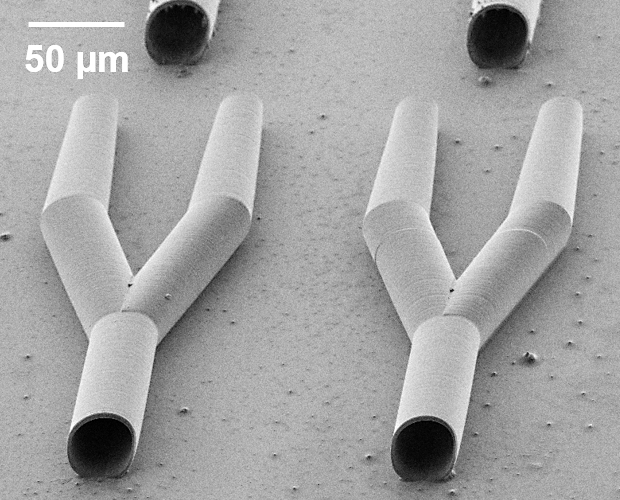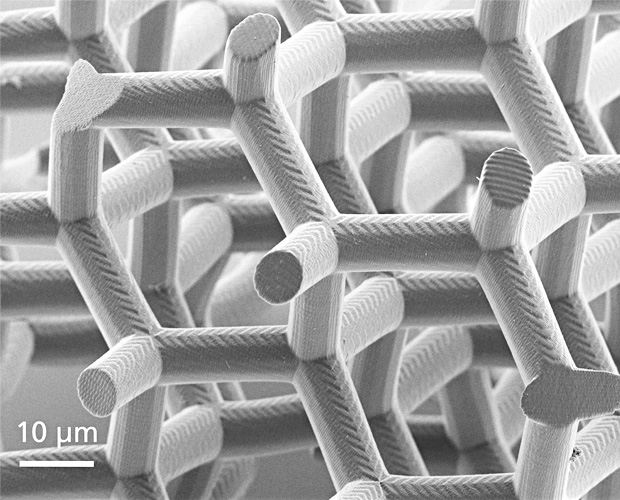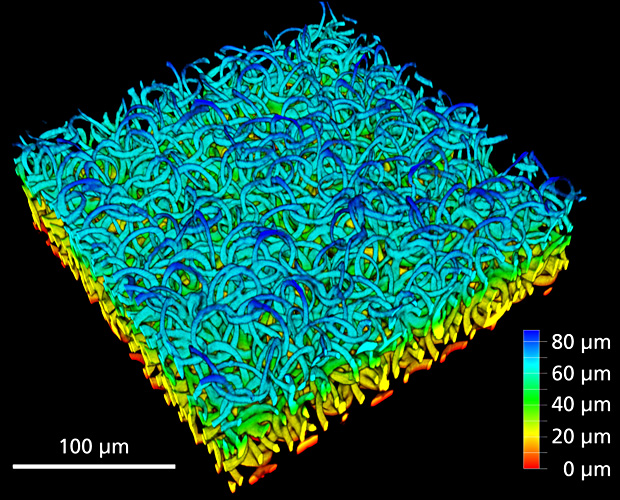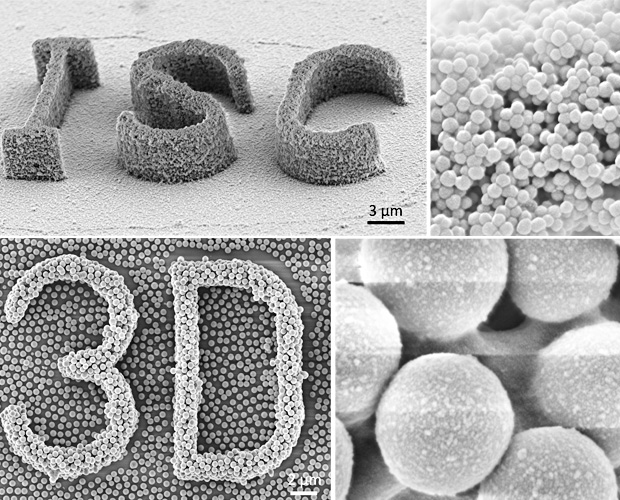Two-Photon Polymerization can be regarded as equivalent for 3D printing on the micron scale. In contrast to UV lithography and 3D printing via stereolithography, 2PP does not treat the resin with UV light but with femtosecond laserpulses in the visible to near-infrared spectral region.
Under normal circumstances those wavelengths would not be absorbed by the transparent resin at all. However, tight focusing and the pulsed nature of the irradiation (energy delivery in few 100s of femtoseconds) leads to two-photon absorption inside the focal volume, that triggers the same chemical transitions as in UV light illumination. Hence, the curing, i.e. solidification of the polymer is strongly confined to the tiny focal volume. It can be regarded as a three dimensional pen for true 3D microfabrication.
During 2PP processing the focal volume is scanned in all three spatial directions to create the desired structure directly from CAD data. After exposure, a solvent wash is carried out to get rid of the unexposed (still liquid) resin.
